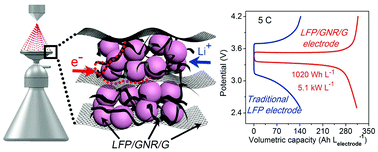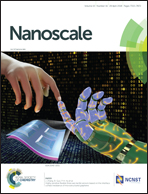A rationally assembled graphene nanoribbon/graphene framework for high volumetric energy and power density Li-ion batteries†
Abstract
High volumetric energy and power densities are crucial for Li-ion batteries, which are however hindered by the loose structure and/or insufficient conductivity of conventional electrode laminates. Herein, an efficiently conductive framework of graphene nanoribbons (GNRs) and graphene (G) is rationally constructed to wrap LiFePO4 (LFP) into a binder-free dense electrode by a coupling technique of spray deposition and vacuum filtration. The spray ensures a uniform mixing of LFP, G and GNRs, meanwhile the vacuum filtration leads to a dense packing of the mixture. With only 2 wt% of G and GNRs, the LFP/GNR/G electrode delivers a high rate capability and a stable (dis)charge cycling performance under high LFP loading conditions. Moreover, the dense LFP/GNR/G electrode exhibits superior volumetric properties among all the reported LFP electrodes on the basis of the entire electrode volume, including a Li storage capacity of 318 A h L−1, an energy density of 1020 W h L−1 and a power density of 5.1 kW L−1 at 5C rate. This unique assembly strategy and the electrode structure pave a new way for high-volumetric-performance batteries.



 Please wait while we load your content...
Please wait while we load your content...